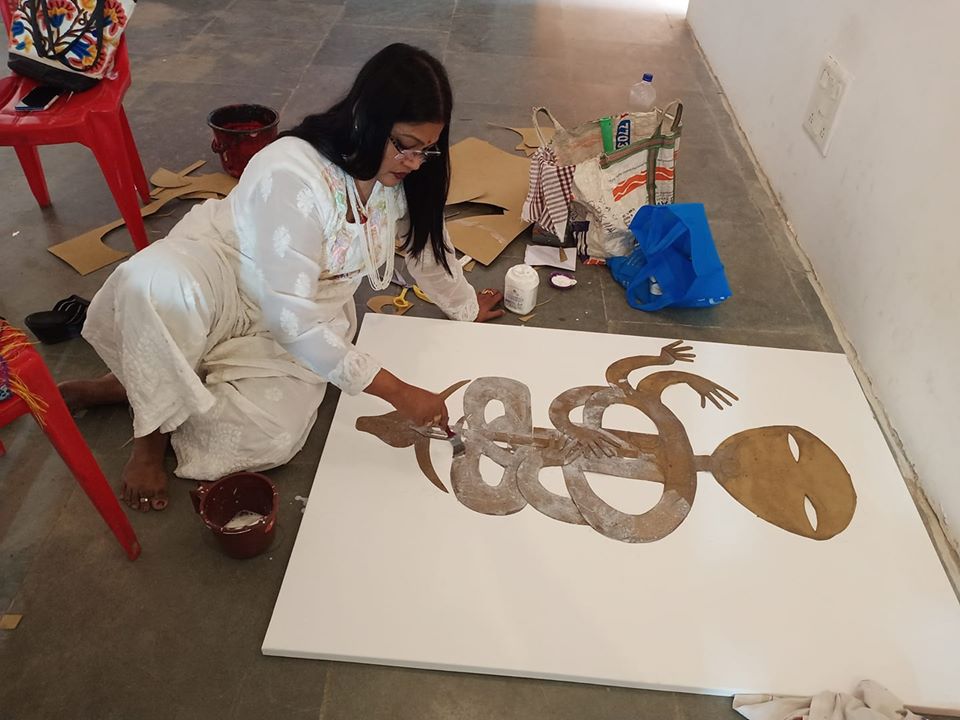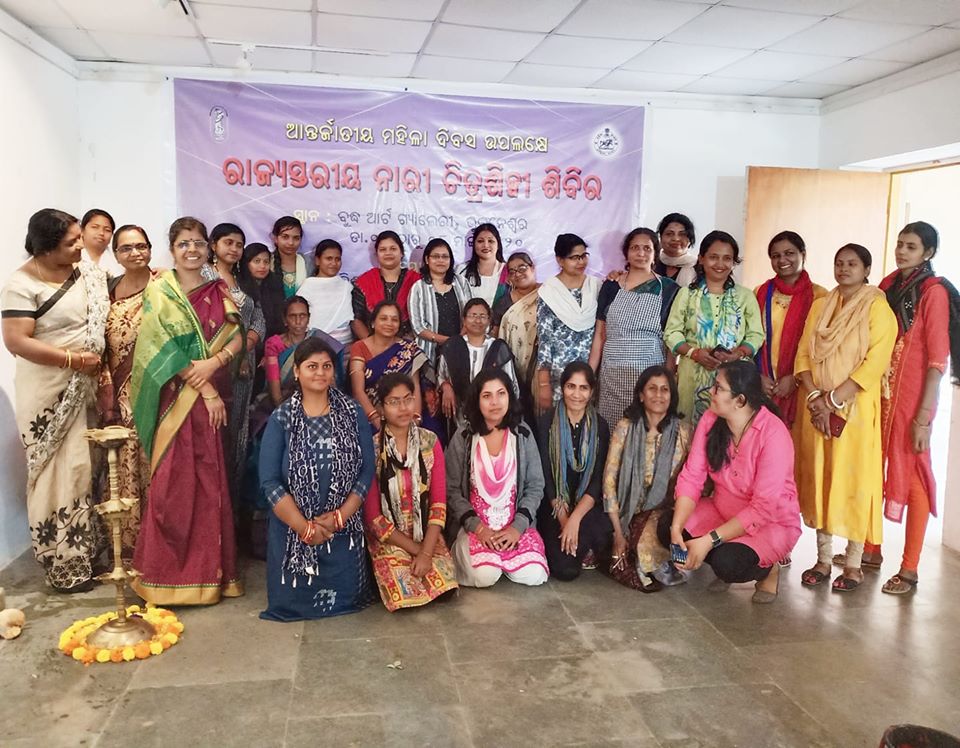Women have been and continue to be integral to the institution of art, but despite being engaged with the art world in every way, many women artists have found opposition in the traditional narrative of art history
BHUBANESWAR: More than 30 painters participated at a state level all-women painting camp organised by Odisha Lalit Kala Akademi and Odia Language, Literature and Culture Department at Buddha Art Gallery in Niladri Vihar here Friday.
“The unique selling point of the event was the invitation to 30 painters who were unable to follow their passion due to household work,” said Gajendra Sahoo, secretary, Odisha Lalit Kala Akademi.
Interacting with Orissa POST, artist Rashmi Rekha Padhi said, “My paintings of Maa Durga are abstract in nature. Every woman is a living form of Goddess Durga who is a savior as well as a destroyer. I used a mix medium with cardboards and diverse colours to enhance the painting.”
Another painter Sangeeta Pradhan said, “I always portray the inner pain of a woman. In my paintings, I have depicted that people don’t need to worship women like a devi. Just give her the freedom she deserves. I just want to live the life of my dreams. This want transcends beyond any social boundaries.”

Atasi Basu made quite a statement with her acrylic painting with black and white colors. According to her, every woman is born with wings. “No more are women scared to live their dreams. Let the men understand that the time has come when for woman to escape the shadows of the male-dominated society.
The event saw presence of Iti Samant, Jyotirmayi Mohanty, Manswini Sahoo and president of Lalit Kala academy Sudarshan Pattnaik at the inaugural function. The three day long camp exhibits 30 paintings. All of the participants will be felicitated by the academy Sunday.
Throughout the centuries, women have been involved in making art, whether as creators and innovators of new forms of artistic expression, patrons, collectors, sources of inspiration, or significant contributors as art historians and critics.
Women have been and continue to be integral to the institution of art, but despite being engaged with the art world in every way, many women artists have found opposition in the traditional narrative of art history. They have faced challenges due to gender biases, from finding difficulty in training to selling their work and gaining recognition.
Women have always been artists, and there always have been glimpses of women’s art within male-driven societies. Even when it comes to the earliest works of art known to us, like the voluptuous Venus of Willendorf from 25000 B.C.E. and other small stone carvings, no one is certain if these works of art were created by women or men.
On the other hand, objects like weavings and clothing have always been associated with women’s craft, from the story of Penelope’s courageous weaving in Homer’s epic tale The Odyssey, from 800 B.C.E., to the 11th century Bayeaux Tapestry, a 270-foot long fabric document telling the story of medieval Britain, likely woven and embroidered by women. Still, women artists faced difficulty in the centuries that followed when trying to engage with the art world and canon.
